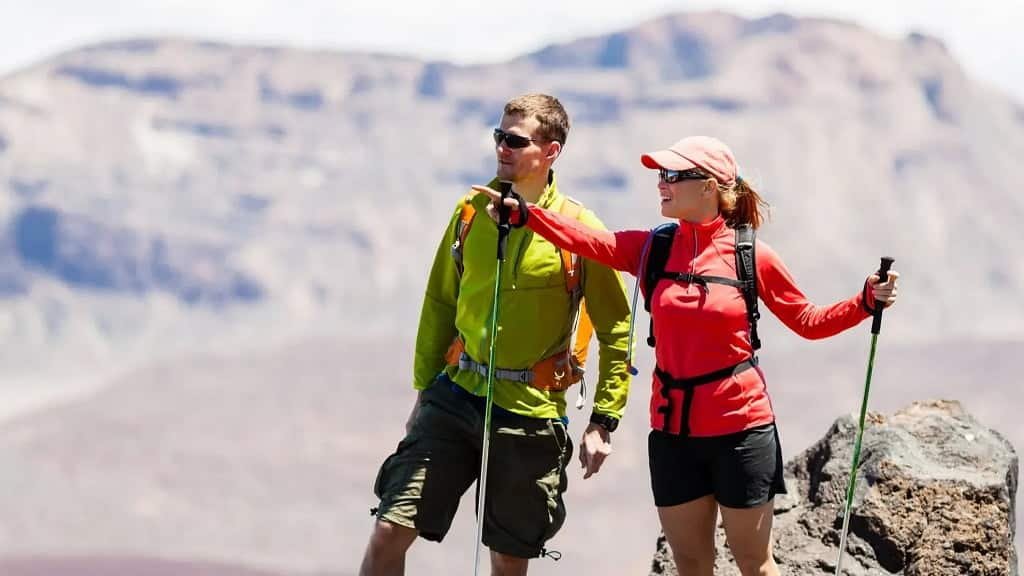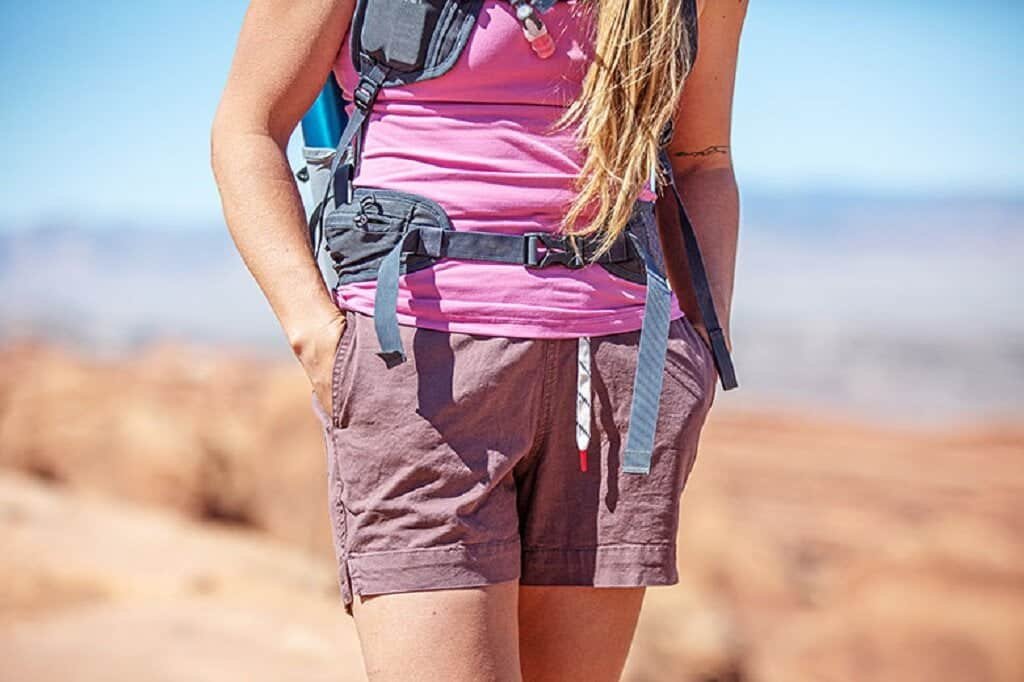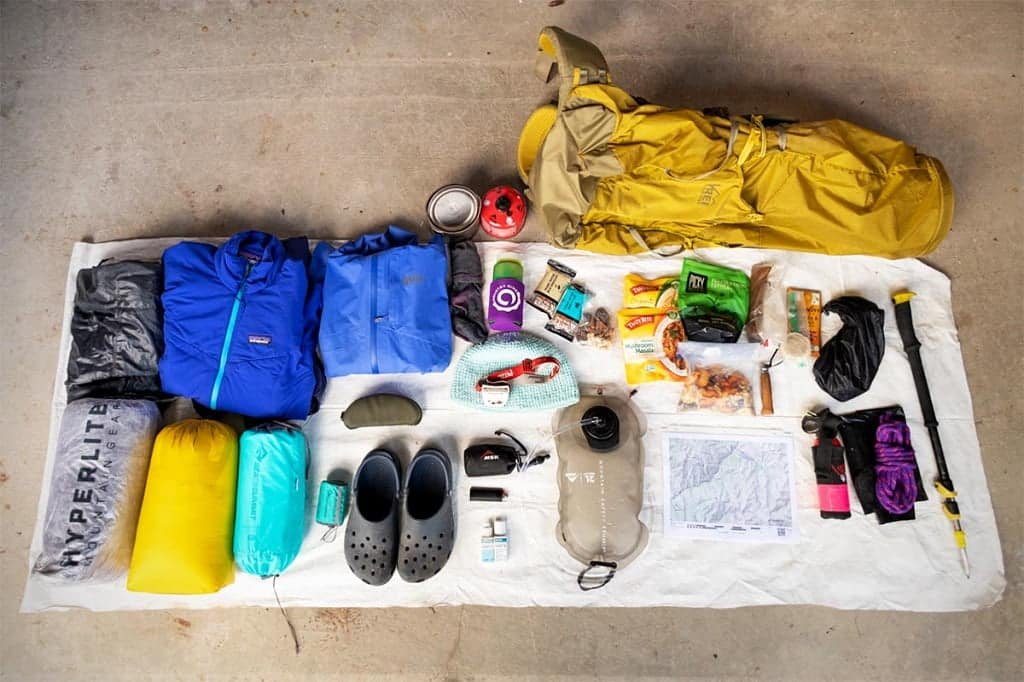Summer hiking is not just about embarking on an adventure and soaking in the beauty of nature. It’s also about ensuring you are prepared and comfortable while doing so. One of the primary factors that dictate this comfort and safety is the clothing you choose. The importance of choosing appropriate clothing for summer hiking cannot be overstated. Nature can be unpredictable, and summer, while inviting, can also pose certain challenges.
Choosing the right attire not only keeps you comfortable but also significantly enhances your hiking experience. Imagine trying to enjoy a beautiful trail, but being constantly bogged down by sweaty, heavy clothes, or getting sunburned because your attire didn’t provide adequate protection. On the flip side, with the right clothing, you can move freely, stay cool, and be protected from potential summer hazards. Moreover, the right gear ensures safety, as inappropriate attire can lead to issues like heat strokes, sunburns, or even unwanted brushes with harmful plants or insects. So read this article and learn a lot about what to wear when hiking in summer.
What to Wear When Hiking in Summer?
The perception of “hot weather” can vary based on your location and the climate you’re accustomed to hiking in. When evaluating heat, it’s essential to look beyond just the temperature. Factors like humidity or wet-bulb temperature, and altitude also play a crucial role.
For instance, hiking in conditions of 85 degrees with 80% humidity at sea level will offer a vastly different experience than hiking in the same temperature with 15% humidity at a higher altitude, where the effects of UV radiation intensify. That’s why in dry, elevated terrains, it’s common to see hikers wearing loose, full-length clothing for added shield. In contrast, those hiking in the humid climates of the southeastern US might find the idea of such attire daunting.
Understanding Summer Hiking Conditions
Before diving into what to wear, it’s essential to understand the challenges posed by typical summer weather conditions. Summers, especially in the great outdoors, can bring about:
High temperatures: While this might be obvious, the intensity can vary depending on the altitude, location, and time of day.
Increased UV rays: The summer sun can be relentless. Extended exposure can lead to sunburns, which are not only painful but harmful in the long run.
Unpredictable rain: Summer showers, while refreshing, can be sudden and intense. Getting drenched and then hiking can lead to discomfort and potential health risks.
Given these conditions, it becomes evident why adaptability and protection in your attire are crucial. The unpredictability of summer weather means hikers should be prepared for a range of scenarios. Your clothing should offer protection against the harsh sun, while also being adaptable enough to handle sudden downpours or temperature drops.
Read More: What to Do If Bitten by a Rattlesnake While Hiking
Basic Principles of Summer Hiking Attire
Choosing summer hiking clothing might seem daunting with the plethora of options available. However, by sticking to a few basic principles, you can ensure you’re well-prepared for the trial:
Breathability: Clothes that don’t breathe trap sweat, making you feel sticky and uncomfortable. Opt for materials that allow for good airflow. This will keep you cooler and reduce the risk of heat-related ailments.
Sun protection: Beyond just slapping on sunscreen (which is also essential), your clothing can play a role in shielding you from UV rays. Look for clothes with a UPF (Ultraviolet Protection Factor) rating.
Moisture-wicking: This is a game-changer. Moisture-wicking materials pull sweat away from your body, allowing it to evaporate quickly. This keeps you dry and reduces chafing.
Lightweight and packable: Lighter clothes will naturally make you feel less burdened. Plus, if you need to change or add layers, having clothes that are easily packable ensures you’re not lugging around unnecessary weight.
In essence, summer hiking is a balance of preparation and adaptability. With the right attire, you can not only face the challenges of the trail but also genuinely enjoy the beauty and serenity that summer hikes have to offer.
Upper Body Clothing

Navigating through the world of hiking attire, particularly for the upper body, requires a mix of understanding about materials, protection, and personal comfort. Here’s a breakdown of what you need to know:
T-Shirts and Tops
Material choices: synthetic vs. natural:
- Synthetic Materials such as polyester and nylon are lightweight, breathable, and have excellent moisture-wicking properties. They dry quickly, which can be essential if you’re sweating or caught in an unexpected downpour.
- Natural Materials like cotton can be comfortable but often retain moisture, making them less suitable for intense hikes. However, merino wool is an exception; it wicks moisture, regulates temperature, and resists odor.
UPF-rated clothing: A shirt’s Ultraviolet Protection Factor (UPF) indicates how effectively it blocks harmful UV rays. Especially during summer hikes, UPF-rated clothing can prevent sunburns and reduce the risk of long-term skin damage.
Short-sleeve vs. long-sleeve considerations: While short-sleeve shirts might seem ideal for summer, long sleeves provide added protection against the sun, bugs, and abrasive vegetation. If made of breathable material, they can be just as comfortable as their short-sleeved counterparts.
One practical way to fine-tune those choices is to look at visual examples of fit and fabric in real-world outdoor outfits. Boards like Chummy Tees collect lightweight graphic tees and layered looks that show how looser cuts, flat seams, and moisture-managing fabrics perform on the trail. Use those images to judge sleeve length, necklines, and how a tee layers under a lightweight jacket or sun shirt. Seeing outfits side-by-side can make it easier to pick pieces that balance breathability, sun protection, and personal style.
Lightweight Jackets and Vests
When to wear them: Even in summer, mornings can be cool, and altitudes can bring chilly winds. Lightweight jackets and vests provide that extra layer of warmth without the bulk.
Material considerations:
- Waterproof Jackets protect against sudden summer showers and are often made of materials like Gore-Tex.
- Wind-resistant Jackets shield against unexpected gusts and are usually lightweight, making them easy to pack when not in use.
Hats and Headwear
Types:
- Wide-brimmed hats: Offer all-round protection against the sun for your face, ears, and neck.
- Baseball caps: Provide frontal shade but less protection for the neck and ears.
- Bandanas: Versatile and can be soaked in water for a cooling effect.
Protection from the sun and keeping cool: Hats not only shield your face and scalp from UV rays but, when combined with moisture-wicking properties, can also help keep your head cool.
Read Also: How to Pack a Backpack for Hiking
Lower Body Clothing

Selecting the right lower body attire can make a significant difference in your hiking comfort. Here’s what to consider:
Shorts vs. Pants
Pros and cons of each:
- Shorts: Offer more freedom and can be cooler in hot conditions. However, they provide less protection against sunburn, insects, and plants.
- Pants: Protect against the elements and are recommended for trails with dense vegetation or high insect activity. Many hiking pants are also convertible, allowing you to zip off the legs if temperatures rise.
Material and design considerations: Look for materials that are lightweight, breathable, and quick-drying. Some pants also come with reinforced knees or built-in UPF protection.
Undergarments
Importance of moisture-wicking underwear: A base layer that wicks away sweat is vital. It keeps you dry, reduces discomfort, and helps in preventing chafing.
Avoiding chafing: Chafing can turn a pleasant hike into a painful ordeal. Moisture-wicking underwear, combined with anti-chafing creams or balms, can be a lifesaver.
While summer hiking attire should be lightweight and breathable, it should also protect against the elements. By considering the points mentioned above, you can ensure comfort and safety on your next summer adventure.
Footwear

Footwear, arguably the most crucial aspect of any hiker’s gear, can make or break your hiking experience. Making informed decisions based on your needs and the terrain you’ll be tackling is vital.
Shoes
Hiking boots vs. trail runners:
- Hiking Boots: Generally offer more ankle support and are durable, designed for rough terrains and multi-day treks. They might be overkill for casual day hikes but are invaluable for extended adventures.
- Trail Runners: Lighter and more flexible than hiking boots, these are perfect for day hikes and less rugged terrains. They provide the agility and speed that boots might not.
Breathable materials and designs: Particularly in summer, shoes made from breathable materials or those with ventilation designs can prevent feet from getting excessively sweaty, reducing the risk of blisters.
Ankle support considerations: If you’re prone to ankle injuries or are carrying heavy backpacks, consider footwear that offers solid ankle support.
Socks
Material choices: synthetic vs. wool:
- Synthetic: Quick-drying and durable, synthetic socks, often made from polyester or acrylic, are excellent for wicking moisture.
- Wool: Merino wool, in particular, is known for its temperature-regulating properties. A pair of merino socks can keep the feet warm in cold conditions and cool in hot ones. It also has natural antimicrobial properties.
Thickness and height considerations: The thickness should match the intensity of the hike and the fit of your shoes. Thicker socks offer more cushioning but can be warmer. As for height, it’s often down to personal preference and protection against trail debris.
Also Read: What is the Longest Hiking Trail in North America
Additional Accessories

Often overlooked, these additional accessories can significantly enhance your hiking experience.
Sunglasses
Importance of UV protection: Protecting your eyes from harmful UV rays is as crucial as protecting your skin. Extended exposure can lead to conditions like cataracts in the long run.
Polarized vs. non-polarized: Polarized sunglasses reduce glare from surfaces like water or wet trails, making visuals sharper. Non-polarized glasses might not offer the same glare reduction but still provide UV protection.
Buff or Neck Gaiter
Multi-functional use: These versatile accessories can be used as sun protection for the neck, a sweatband for the forehead, or even soaked in water and worn around the neck for a cooling effect during intense heat.
Gloves
When they might be needed, even in summer: Think early morning hikes or high-altitude areas where temperatures can still be chilly. Thin, breathable gloves can also offer protection against sunburn or chafing from trekking poles.
Walking Poles
Benefits for balance and reducing stress on joints: Walking poles aren’t just for challenging terrains. They distribute the load, provide an added layer of balance, and significantly reduce the stress on knees and ankles, especially during descents.
Choosing Materials Wisely
Your choice of materials can significantly affect your overall hiking experience, especially during summer. Being discerning about the fabrics you wear is paramount.
Benefits of synthetic materials in summer:
- Breathability: Synthetic materials, like polyester and nylon, allow your skin to breathe better, reducing sweat accumulation.
- Lightweight: They’re often lighter, ensuring you don’t feel bogged down during your hike.
- Durability: Synthetic fabrics are designed to withstand the rigors of outdoor activities.
When and where natural materials like cotton can be a detriment: Cotton is notorious for retaining moisture, making it heavy and uncomfortable when wet. In colder conditions or during unexpected rain, this can pose a hypothermia risk. Moreover, wet cotton can lead to chafing.
Quick-drying properties: Synthetic materials tend to dry faster than natural ones. This ensures that even if you do get wet, you won’t remain so for long.
To Know More: How to Pack a Hiking Backpack
Protecting Against Insects and Plants
Nature’s beauty often comes with tiny challenges. Here’s how to protect yourself against some of the smaller inhabitants of the wild:
Wearing long sleeves and pants in bug-infested areas: This simple barrier can deter many bugs and insects from biting or stinging.
Permethrin-treated clothing: Permethrin is an insect repellent that can be applied to clothing. It repels and kills ticks, mosquitoes, and other bugs upon contact.
Recognizing and avoiding harmful plants: Familiarize yourself with local plants before your hike. Plants like poison ivy, oak, or sumac can cause skin irritations. The adage “Leaves of three, let it be” can be a helpful reminder for identifying poison ivy.
Hydration and Staying Cool
Summer hiking means dealing with heat. Here are some strategies to ensure you remain hydrated and cool:
Importance of carrying adequate water: Dehydration can lead to severe complications, including heat exhaustion. Ensure you have enough water for the duration of your hike, and then some.
Wearing light colors to reflect the sun: Light-colored clothing reflects sunlight, thereby reducing the amount of heat your body absorbs.
Recognizing signs of overheating: Dizziness, rapid pulse, nausea, or headache can all be signs of heat-related illnesses. Recognize the symptoms, and take immediate action if they arise.
Should I wear shorts or pants hiking in summer?
Choosing between shorts and pants for hiking in the summer depends on several factors:
Temperature and Weather: If it’s very hot, shorts will keep you cooler. However, if you expect any significant changes in weather, such as a drop in temperature or rain, pants might be a better choice.
Protection: Pants offer better protection against sunburn, insect bites, and scratches from vegetation or rocks. If you’re hiking in an area with dense vegetation, lots of bugs, or under direct sunlight, pants might be the safer option.
Comfort: Some people find pants more comfortable for avoiding chafing, especially on longer hikes. Breathable, lightweight pants can be almost as cool as shorts but offer more protection.
Material: Look for materials that wick moisture, dry quickly, and are breathable. Lightweight, synthetic fabrics are often a good choice for either shorts or pants.
Ultimately, your choice might also come down to personal preference and the specific conditions of the trail you plan to hike.
What is the best material to wear hiking in the summer?
For summer hiking, choosing the right material is crucial for comfort and safety. Here are some of the best materials to consider:
Synthetic Fabrics: Materials like nylon and polyester are popular for hiking apparel because they are lightweight, breathable, and moisture-wicking. They help keep you dry by pulling sweat away from your skin and drying quickly, which is essential in hot weather.
Merino Wool: While typically associated with colder conditions, merino wool is excellent for summer as well. It’s naturally moisture-wicking, quick-drying, and odor-resistant. Lightweight merino wool garments are exceptionally good at regulating body temperature, keeping you cool when it’s hot and warm if it cools down.
Bamboo Blends: Bamboo is another great choice due to its soft texture, breathability, and natural anti-bacterial properties, which help reduce odor. It also offers UV protection, which is beneficial for long hours under the sun.
Spandex (Elastane): Often blended with other materials, spandex provides stretch, which enhances the comfort and freedom of movement during hiking.
UPF-rated Fabrics: Some fabrics are treated to provide an Ultraviolet Protection Factor (UPF). These are excellent for hiking as they help protect your skin from the sun’s harmful UV rays.
When choosing hiking clothes, it’s also important to avoid cotton in warm, humid conditions, as it absorbs moisture and dries slowly, which can lead to discomfort and chafing.
What is the best outfit to wear when hiking?
The best hiking outfit is one that combines comfort, protection, and adaptability to varying weather conditions. Here’s a recommended outfit for a typical hiking trip:
Base Layer:
Top: Choose a moisture-wicking, breathable shirt made of materials like polyester or merino wool. For summer, a short-sleeved or sleeveless top works well.
Bottom: Lightweight, breathable underwear that wicks away moisture is essential for comfort and preventing chafing.
Mid Layer (optional, depending on the weather):
Fleece or Softshell Jacket: This layer is for insulation. A lightweight fleece or a breathable softshell jacket is perfect for cooler mornings or higher elevations where temperatures can drop.
Outer Layer:
Pants: Convertible pants (which can be zipped off into shorts) are highly versatile. Choose a material that is quick-drying, lightweight, and durable. Look for pants with UV protection and maybe some water resistance.
Jacket: A lightweight, waterproof, and breathable rain jacket is vital if there’s any chance of rain or strong winds.
Footwear:
Socks: Wool or synthetic socks that are designed for hiking will help prevent blisters and keep your feet dry.
Shoes: Waterproof hiking boots or trail shoes that provide good support and grip are crucial. The choice between boots and shoes depends on the terrain and your comfort preference.
Accessories:
Hat: A hat with a brim will protect your face and neck from the sun.
Sunglasses: UV-protection sunglasses will protect your eyes on sunny days.
Backpack: A comfortable backpack with enough space for your essentials but not so large that it becomes cumbersome.
Gloves: Lightweight gloves can be useful for chilly mornings or higher altitudes.
Each piece of clothing should be chosen based on the specific conditions you expect on the trail (temperature, terrain, and weather). It’s always a good idea to check the weather forecast and plan accordingly, including packing layers for unexpected changes.
Conclusion
Summer hiking can be an exhilarating experience, but it requires thoughtful preparation. Choosing the right materials ensures comfort, while also being aware of potential natural hazards ensures safety. Remember, the key lies in adaptability. Nature is unpredictable, and your best defense is being prepared for as many scenarios as possible. As you embark on your journey, keep the essentials in mind, and let the serenity of nature rejuvenate your spirit. Safe trails!












![How to Choose the Best Toronto Travel Agency? [From Flights to Cruises] Toronto Travel Agency](https://tourinplanet.com/wp-content/uploads/2025/09/Toronto-Travel-Agency-100x75.jpg)

[…] Read: What to Wear When Hiking in Summer? […]
[…] Read: What to Wear When Hiking in Summer? […]
Comments are closed.